
|
|
Font Size:
|
||||
|
|
|
|
||||
STATISTICAL BRIEF #436:
Comparing Health Insurance Coverage and Costs for Employees in Lower-Wage versus Higher-Wage Establishments, Private Sector, 2012
Highlights
- In 2012, employees in lower-wage private-sector establishments were less likely to be working where health insurance was offered compared to employees at higher-wage establishments (71.4 percent versus 90.5 percent, respectively).
- Among those establishments that offered health insurance, only one-third of employees in lower-wage establishments enrolled compared to slightly more than two-thirds of the employees in higher-wage establishments.
- Employees working in lower-wage establishments paid a larger share of the total premium for single, employee-plus-one, and family plans than did employees in higher-wage establishments.
Introduction
Variations in employer characteristics such as size, age, location, and industry are often associated with differences in whether health insurance is offered to employees, whether employees enroll in insurance, and the cost to employers and employees when coverage is offered. Another method of characterizing employers uses the percentage of their employees identified as “low-wage.” In 2012, for the purpose of this Statistical Brief, low-wage employees in the private sector are defined as those who earned less than $11.50 per hour. According to the Insurance Component of the Medical Expenditure Panel Survey (MEPS-IC), 30.6 percent of private-sector employees worked in an establishment where 50 percent or more of employees are low-wage (data not shown).This Statistical Brief compares 2012 employer-sponsored health insurance offers, enrollments, and costs for those employees working at private-sector establishments where 50 percent or more of employees were low-wage (referred to as “lower-wage establishments”) versus those working where less than 50 percent of employees were low-wage (referred to as “higher-wage establishments”).
Only those differences that are statistically significant at the 0.05 significance level are discussed.
Findings
Employees in lower-wage private-sector establishments in 2012 were less likely to be working where health insurance was offered compared to employees in higher-wage establishments (71.4 percent versus 90.5 percent, respectively) (figure 1). Those employees in lower-wage establishments where insurance was offered were about half as likely to enroll in health insurance as those in higher-wage establishments that offered insurance (33.2 percent versus 67.8 percent, respectively).Among employees obtaining health insurance through their private sector employers, employees in lower-wage establishments were more likely to choose single coverage (60.5 percent) than employees in higher-wage establishments (49.8 percent) (figure 2). Conversely, employees in lower-wage establishments were less likely to take either employee-plus-one (15.1 percent) or family coverage (24.5 percent) compared to employees in higher-wage establishments, where 18.6 percent took employee-plus-one and 31.6 percent took family coverage.
Reflecting the differences in premiums and employee contributions between lower-wage and higher-wage establishments, figure 5 shows the percent of total premiums contributed by employees enrolled in employer-sponsored health insurance was consistently higher in lower-wage establishments. For single coverage, employees in lower-wage establishments paid 24.4 percent of the total premium while employees in higher-wage establishments paid 20.1 percent. A similar difference exists for employee-plus-one coverage with employees in lower-wage establishments contributing 30.9 percent compared to 26.0 percent for employees in higher-wage establishments. The difference increases for family coverage with employees in lower-wage establishments contributing 33.4 percent compared to 26.7 percent for employees in higher-wage establishments.
Data Source
The statistics in this Brief are estimates from the 2012 MEPS-IC. All information comes from tables that are available on the MEPS Web site at http://www.meps.ahrq.gov/mepsweb/survey_comp/Insurance.jsp. This Brief is limited to a discussion of private sector statistics.Definitions
Health insurance planAn insurance contract that provides hospital and/or physician coverage to an employee or retiree for an agreed-upon fee (premium) for a defined benefit period.
Employee
A person on the actual payroll. Excludes temporary and contract workers but includes the owner or manager if that person works at the firm.
Establishment
A particular workplace or physical location where business is conducted or services or industrial operations are performed. Also known as a site. The sample is chosen at the establishment level, and the MEPS-IC data are collected at the establishment level whenever possible.
Premium
Agreed-upon fee paid for coverage of medical benefits for a defined benefit period, usually a calendar year. Premiums can vary based on a variety of factors, such as services covered, amounts of deductibles and co-pays, location of firm, and demographics of the workforce.
Single coverage
Health insurance that covers the employee only.
Employee-plus-one coverage
Health insurance that covers the employee plus one family member at a lower premium level than family coverage. This family member could be a spouse or child. If premiums differed for employee-plus-spouse and employee-plus-child coverage, information for employee-plus-child was reported.
Family coverage
Health insurance that covers the employee and the employee's family. If a plan offered more than one pricing level for family coverage, information for a family of four was reported.
About MEPS-IC
The MEPS-IC is a survey of business establishments and governments that collects information on employer-sponsored health insurance, such as whether insurance is offered, enrollments, types of plans, and premiums. The survey is conducted annually by the U.S. Census Bureau under the sponsorship of the Agency for Healthcare Research and Quality (AHRQ). A total sample of approximately 42,000 private sector establishments was selected for the 2012 survey, with 7.0 percent of the sample determined to be out-of-scope during the data collection process. The response rate for the private-sector was 79.9 percent of the remaining in-scope sample units.For more information on this survey, see MEPS Methodology Reports 6, 8, 10, 14, 17, 18, and 27 on the MEPS Web site and Insurance Component Survey Basics at http://www.meps.ahrq.gov/mepsweb/survey_comp/Insurance.jsp.
Suggested Citation
Carroll, W.A. and Crimmel, B.L. Comparing Health Insurance Coverage and Costs for Employees in Lower-Wage versus Higher-Wage Establishments, Private Sector, 2012. Statistical Brief #436. April 2014. Agency for Healthcare Research and Quality, Rockville, MD. http://www.meps.ahrq.gov/mepsweb/data_files/publications/st436/stat436.shtmlSteven B. Cohen, PhD, Director
Center for Financing, Access, and Cost Trends
Agency for Healthcare Research and Quality
540 Gaither Road
Rockville, MD 20850
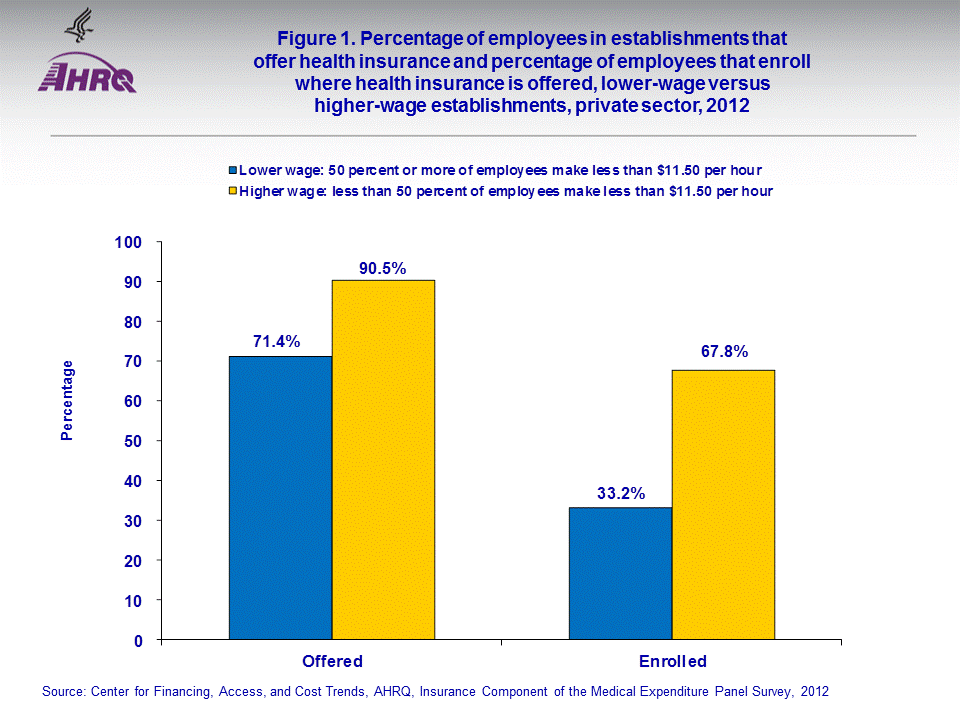 |
||||||||||||||||
|
||||||||||||||||
|
|
||||||||||||||||
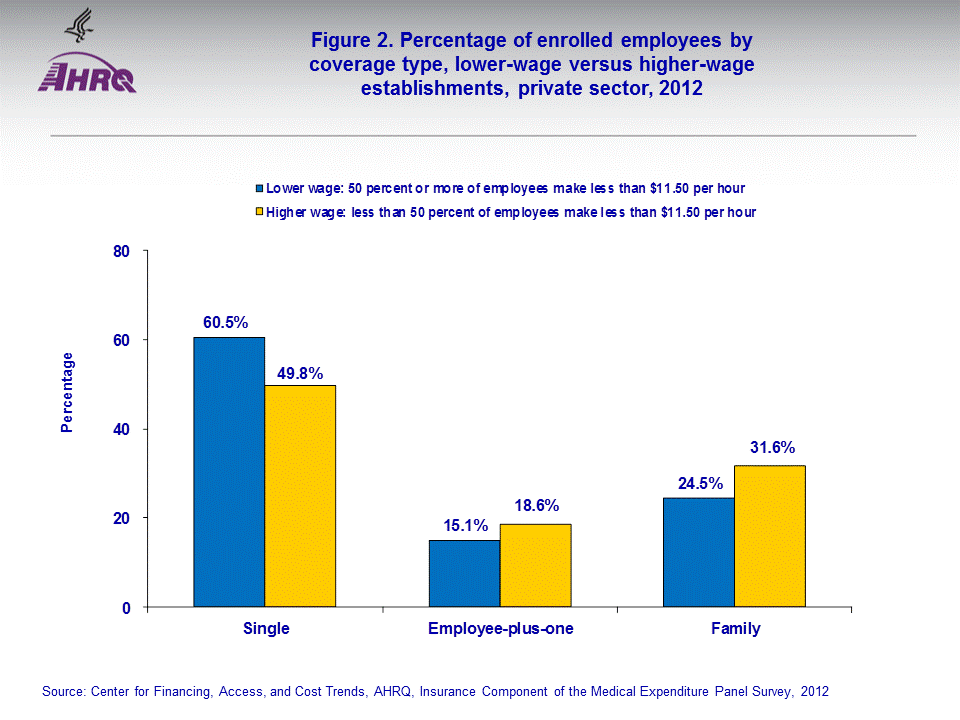 |
||||||||||||||||
|
||||||||||||||||
|
|
||||||||||||||||
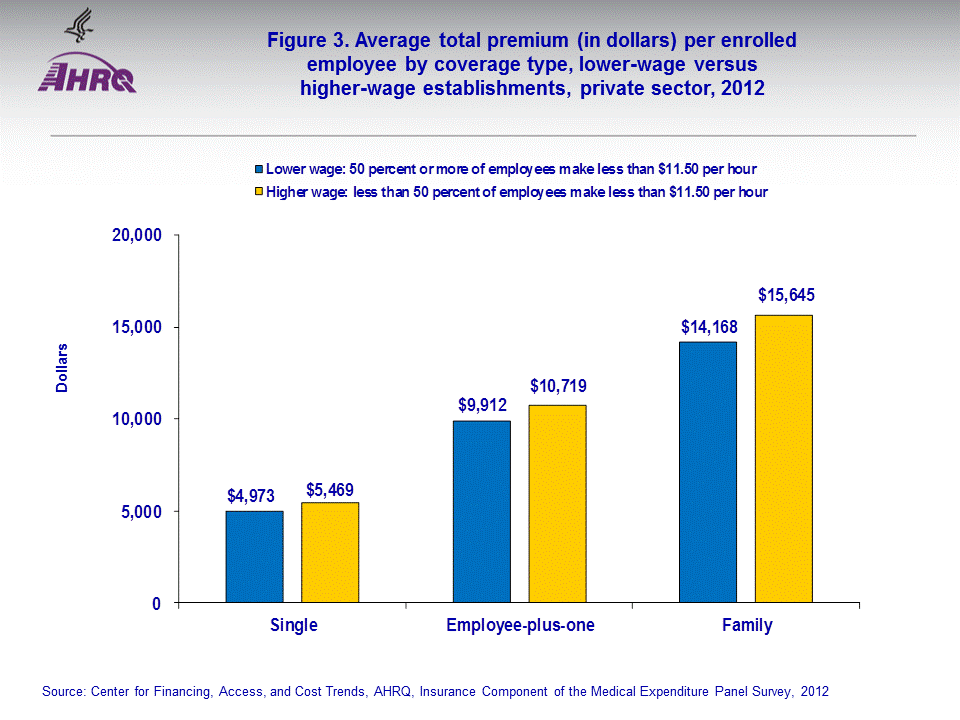 |
||||||||||||||||
|
||||||||||||||||
|
|
||||||||||||||||
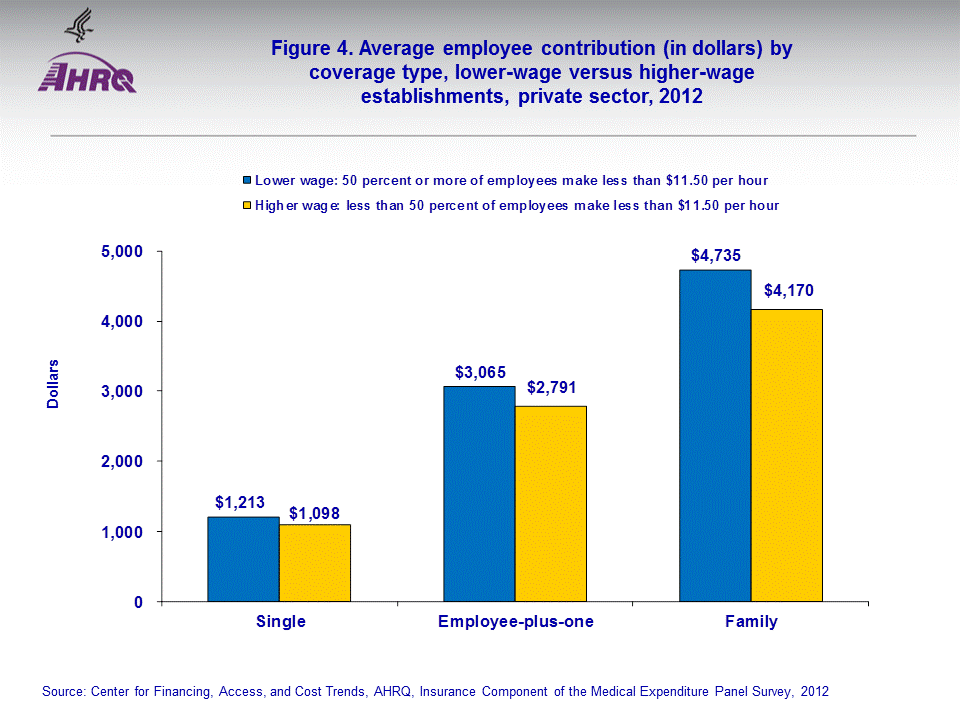 |
||||||||||||||||
|
||||||||||||||||
|
|
||||||||||||||||
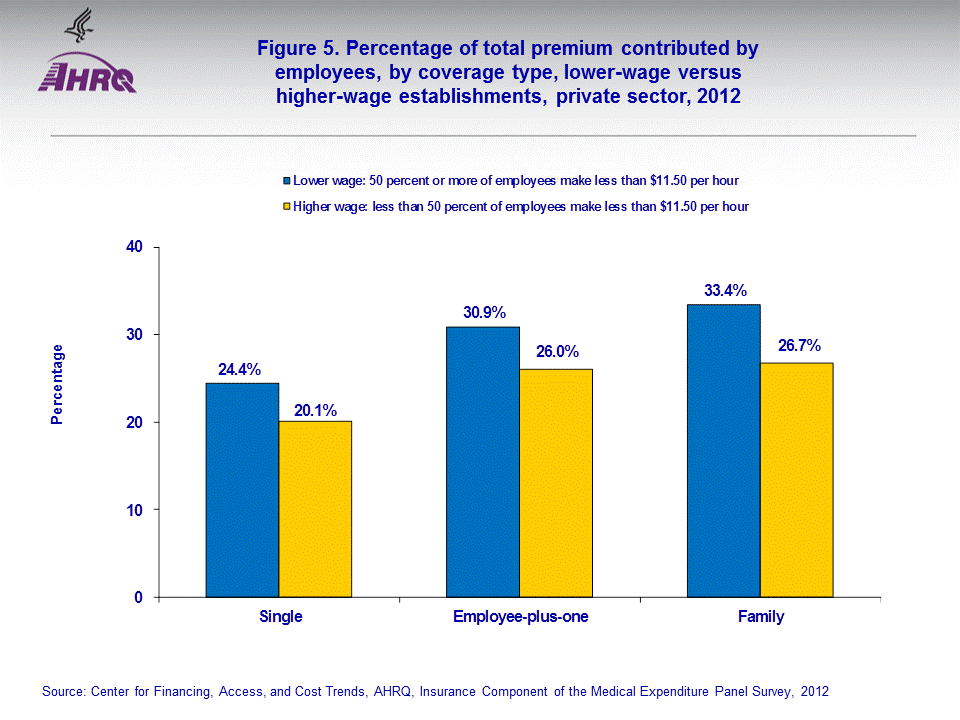 |
||||||||||||||||
|
||||||||||||||||
|
|
||||||||||||||||


